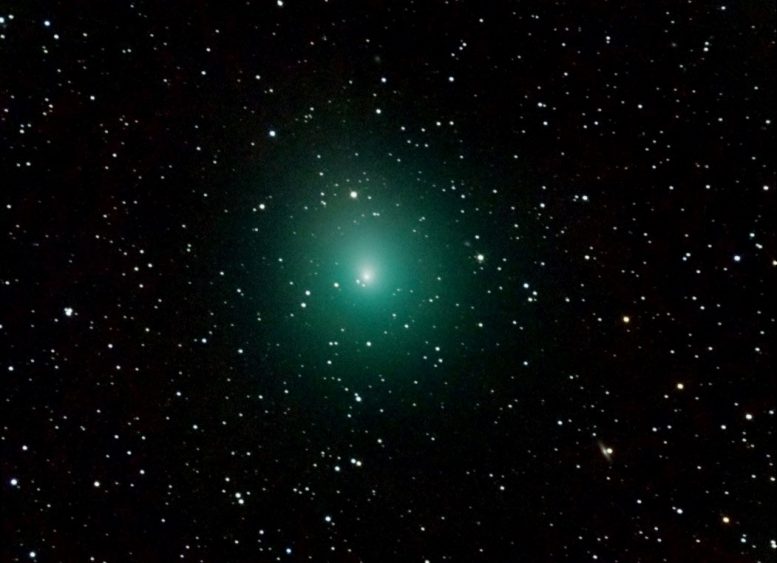
[ad_1]

Comet 46P / Wirtanen on 3 January 2019. © Nicolas Biver
Where does the water from the Earth come from? Although comets, with their frozen nuclei, seem to be ideal candidates, analyzes have so far shown that their water differs from that of our oceans. Now, however, an international team bringing together researchers from the CNRS at the Laboratory of Radiation and Matter Studies in Astrophysics and Atmospheres (Paris Observatory – PSL / CNRS / Sorbonne University / University of Cergy-Pontoise) and the Laboratory of # 39; studies and spatial instrumentation in Astrophysics (Observatory of Paris – PSL / CNRS / University of Sorbonne / University of Paris) discovered that a family of comets, hyperactive comets, contains a similar water to the groundwater. The study, published in the journal Astronomy & Astrophysics on May 20, 2019, relies in particular on measurements of the comet 46P / Wirtanen made by SOFIA, the stratospheric observatory for infrared astronomy of NASA.
According to classical theory, the Earth is thought to have formed from the collision of small planetary bodies called planetesimals. These bodies being poor in water, the water of the Earth must have been provided either by a larger planetesimal, or by a shower of smaller objects such as asteroids or comets.
The researchers are studying isotopic ratios, and in particular the ratio of deuterium to hydrogen in water, called the D / H ratio (deuterium is a heavier form of hydrogen). When a comet approaches the Sun, its ice sublimates, forming an atmosphere of water vapor that can be analyzed from a distance. However, the comet D / H ratios measured so far are typically two to three times higher than those of seawater, which implies that comets contribute only about 10% of the Earth's water. .
When comet 46P / Wirtanen approached Earth in December 2018, it was analyzed with the help of the SOFIA airborne observatory, boarded by a Boeing aircraft. This was the third comet with the same D / H ratio as terrestrial water. Like the two previous comets, it belongs to the category of hyperactive comets which, when approaching the Sun, release more water than the surface of their nucleus should allow. The excess is produced by the ice-rich particles present in their atmosphere.
Intrigued, the researchers determined the active fraction (that is, the fraction of the core surface required to produce the amount of water in their atmosphere) of all comets with a known D / H ratio. They discovered that there was an inverse correlation between the active fraction and the D / H ratio of water vapor: the more a comet tends to hyperactivity (ie, say an active fraction greater than 1), plus its ratio D / H decreases and the earth.
The hyperactive comets, whose water vapor comes partly from grains of ice expelled into their atmosphere, therefore have a D / H ratio similar to that of terrestrial water, unlike comets whose halo of gas is produced only by surface ice. The researchers suggest that the D / H ratios measured in the atmosphere of the latter do not necessarily indicate the presence of ice in their nucleus. If this hypothesis is correct, the water of all cometary nuclei could in fact be very similar to terrestrial water, which would reopen the debate about the origin of the Earth's oceans.
Publication: Terrestrial Report of Deuterium to Hydrogen in the Water of Overactive Comets, DC Lis, D. Bockelee-Morvan, R. Guesten, N. Biver, J. Stutzki, Y. Delorme, C. Duran , H. Wiesemeyer, Y. Okada. Astronomy and Astrophysics, May 20, 2019. Date: 10.1051 / 0004-6361 / 201935554
[ad_2]
Source link